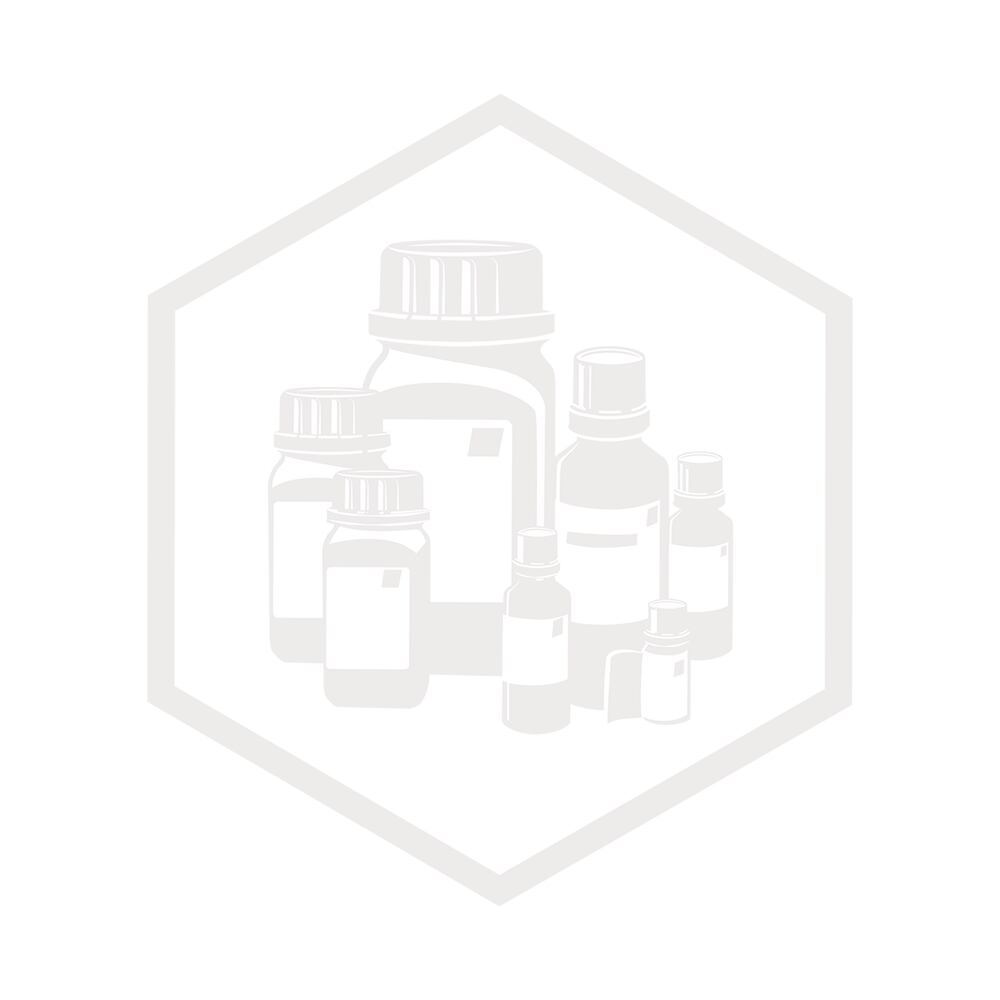product.details.print
Urease, 5 g, plastic
Storage temp. -20 °C
Transport temp. cooled
WGK 1
CAS No. 9002-13-5
EG-Nr. 232-656-0
Using high amounts of urea as substrate (200 mM), urease is applied for visualisation of the connection between reaction rate and time. Detection is carried out via measurement of conductivity, or, photometrically, via colour change of bromothymol blue. Furthermore, model system for catalytic activation of carbon dioxide in metallo-organic chemistry.
167,70 €/VE Campaign price!
Excl. btw | 5 g Per VE
Bestelnr. 7537.1
Productdetails
Hydrolase belonging to the Amidases. Metallo-enzyme. Urease hydrolasis urea, resulting in ammonia and carbon dioxide, or in ammonia- and carbonate ions, respectively. The molecule isolated from Jack beans is composed of 6 subunits of approx. 91 kDa each with an overall size of approx. 544 kDa. Nickel is the cofactor.
Using high amounts of urea as substrate (200 mM), urease is applied for visualisation of the connection between reaction rate and time. Detection is carried out via measurement of conductivity, or, photometrically, via colour change of bromothymol blue. Furthermore, model system for catalytic activation of carbon dioxide in metallo-organic chemistry.
pH optimum: 7.4.
Recommended reaction buffer system is 40 mM potassium phosphate buffer, pH 7.4. Heavy metals (e. g. lead) are inhibitory.
Urease ~1 U/mg, for biochemistry
1 Unit enzyme hydrolyses 1 µmol urea per minute at 25 °C (pH 8.0).
- Tussentotaal: 0.00
| Bestelnr. | VE | Verp. | Prijs | Hoeveelheid | |
|---|---|---|---|---|---|
| 7537.1 | 5 g | plastic |
209,65 €
167,70 € |
|
|
|
Op voorraad
Beschikbaar
In bestelling
Niet meer verkrijgbaar
Leveringsdatum onbekend
|
|||||
- Tussentotaal: 0.00
Downloads / MSDS
Algemene informatie
Enzyme: a neoclassical, Greek artificial word ενζυμου, énzymon, derived from εν-, en- (in-) and ζυμη, zýmé (yeast, sourdough, archaic)
Ferments: comes from the Latin fermentum (ferments, sourdough)
There are six classes in which all enzymes are classified according to the particular reaction they catalyse:
• Oxidoreductases (catalyse redox reactions)
• Transferases (transfer functional groups among substrates)
• Hydrolases (cleave bonds via addition of water)
• Lyases/Synthases (cleave or synthesise complex products out of basic substrates without cleavage of ATP)
• Isomerases (transform chemical isomers)
• Ligases/Synthetases (cleave or synthesise complex products out of basic substrates via cleavage of ATP)
Enzyme: a neoclassical, Greek artificial word ενζυμου, énzymon, derived from εν-, en- (in-) and ζυμη, zýmé (yeast, sourdough, archaic)
Ferments: comes from the Latin fermentum (ferments, sourdough)
There are six classes in which all enzymes are classified according to the particular reaction they catalyse:
• Oxidoreductases (catalyse redox reactions)
• Transferases (transfer functional groups among substrates)
• Hydrolases (cleave bonds via addition of water)
• Lyases/Synthases (cleave or synthesise complex products out of basic substrates without cleavage of ATP)
• Isomerases (transform chemical isomers)
• Ligases/Synthetases (cleave or synthesise complex products out of basic substrates via cleavage of ATP)
Analysecertificaten
Type analysis
| Appearance | slightly cream-coloured powder |
| Activity | 0.8-1.2 U/mg |

